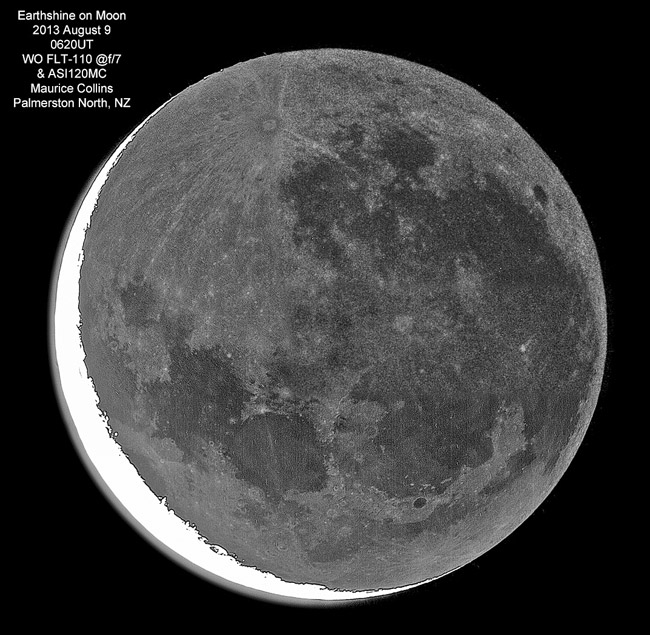Difference between revisions of "August 11, 2013"
| Line 3: | Line 3: | ||
<!-- ws:start:WikiTextHeadingRule:0:<h1> --> | <!-- ws:start:WikiTextHeadingRule:0:<h1> --> | ||
<!-- ws:start:WikiTextLocalImageRule:6:<img src="/file/view/LPOD-Aug11-13.jpg/444248838/LPOD-Aug11-13.jpg" alt="" title="" /> -->[[File:LPOD-Aug11-13.jpg|LPOD-Aug11-13.jpg]]<!-- ws:end:WikiTextLocalImageRule:6 --><br /> | <!-- ws:start:WikiTextLocalImageRule:6:<img src="/file/view/LPOD-Aug11-13.jpg/444248838/LPOD-Aug11-13.jpg" alt="" title="" /> -->[[File:LPOD-Aug11-13.jpg|LPOD-Aug11-13.jpg]]<!-- ws:end:WikiTextLocalImageRule:6 --><br /> | ||
| − | <em>image by [mailto:mauricejscollins@hotmail.com | + | <em>image by [mailto:mauricejscollins@hotmail.com Maurice Collins], New Zealand</em><br /> |
<br /> | <br /> | ||
| − | I'm almost willing to believe that William Herschel did see a lunar eruption in 1787. That is what he [http://www.lpod.org/cwm/Timeline/1700s/1787-Herschel.html | + | I'm almost willing to believe that William Herschel did see a lunar eruption in 1787. That is what he [http://www.lpod.org/cwm/Timeline/1700s/1787-Herschel.html claimed] after observing Aristarchus crater in Earthshine. Maurice's gritty image does show that Aristarchus is bright, but nothing that would make any half-experienced observer consider it to be out of the ordinary. Herschel had been observing the Moon since 1776 and although he thought that he saw large forests near Gassendi and believed that the Moon, like the Sun, was inhabited, he must have built up some experience and understanding of what it looked like under different illuminations. As Bill Sheehan and Tom Dobbins report in their excellent book, <em>Epic Moon</em>, after the French astronomer Lalande wrote to Herschel that the brightness was just bright material reflecting Earthshine, Herschel stopped writing about lunar eruptions. It is remarkable that such a careful observer of stars could be so wrong about the Moon.<br /> |
<br /> | <br /> | ||
| − | <em>[mailto:tychocrater@yahoo.com | + | <em>[mailto:tychocrater@yahoo.com Chuck Wood]</em><br /> |
<br /> | <br /> | ||
<strong>Related Links</strong><br /> | <strong>Related Links</strong><br /> | ||
| − | Holden's [http://articles.adsabs.harvard.edu//full/1888Obs....11..335E/0000335.000.html | + | Holden's [http://articles.adsabs.harvard.edu//full/1888Obs....11..335E/0000335.000.html comments] about Herschel's eruption.<br /> |
| − | Elger's and Williams' [http://articles.adsabs.harvard.edu/full/seri/Obs../0011//0000378.000.html | + | Elger's and Williams' [http://articles.adsabs.harvard.edu/full/seri/Obs../0011//0000378.000.html comments] about Holden's comments.<br /> |
| − | An extensive Russian [http://archive.org/stream/nasa_techdoc_19650015173/19650015173_djvu.txt | + | An extensive Russian [http://archive.org/stream/nasa_techdoc_19650015173/19650015173_djvu.txt article] (translated to English) with many other observations and explanations of Herschel's eruptions.<br /> |
<br /> | <br /> | ||
<hr /> | <hr /> | ||
Revision as of 18:07, 11 January 2015
Hiding in Plain View

image by Maurice Collins, New Zealand
I'm almost willing to believe that William Herschel did see a lunar eruption in 1787. That is what he claimed after observing Aristarchus crater in Earthshine. Maurice's gritty image does show that Aristarchus is bright, but nothing that would make any half-experienced observer consider it to be out of the ordinary. Herschel had been observing the Moon since 1776 and although he thought that he saw large forests near Gassendi and believed that the Moon, like the Sun, was inhabited, he must have built up some experience and understanding of what it looked like under different illuminations. As Bill Sheehan and Tom Dobbins report in their excellent book, Epic Moon, after the French astronomer Lalande wrote to Herschel that the brightness was just bright material reflecting Earthshine, Herschel stopped writing about lunar eruptions. It is remarkable that such a careful observer of stars could be so wrong about the Moon.
Chuck Wood
Related Links
Holden's comments about Herschel's eruption.
Elger's and Williams' comments about Holden's comments.
An extensive Russian article (translated to English) with many other observations and explanations of Herschel's eruptions.



